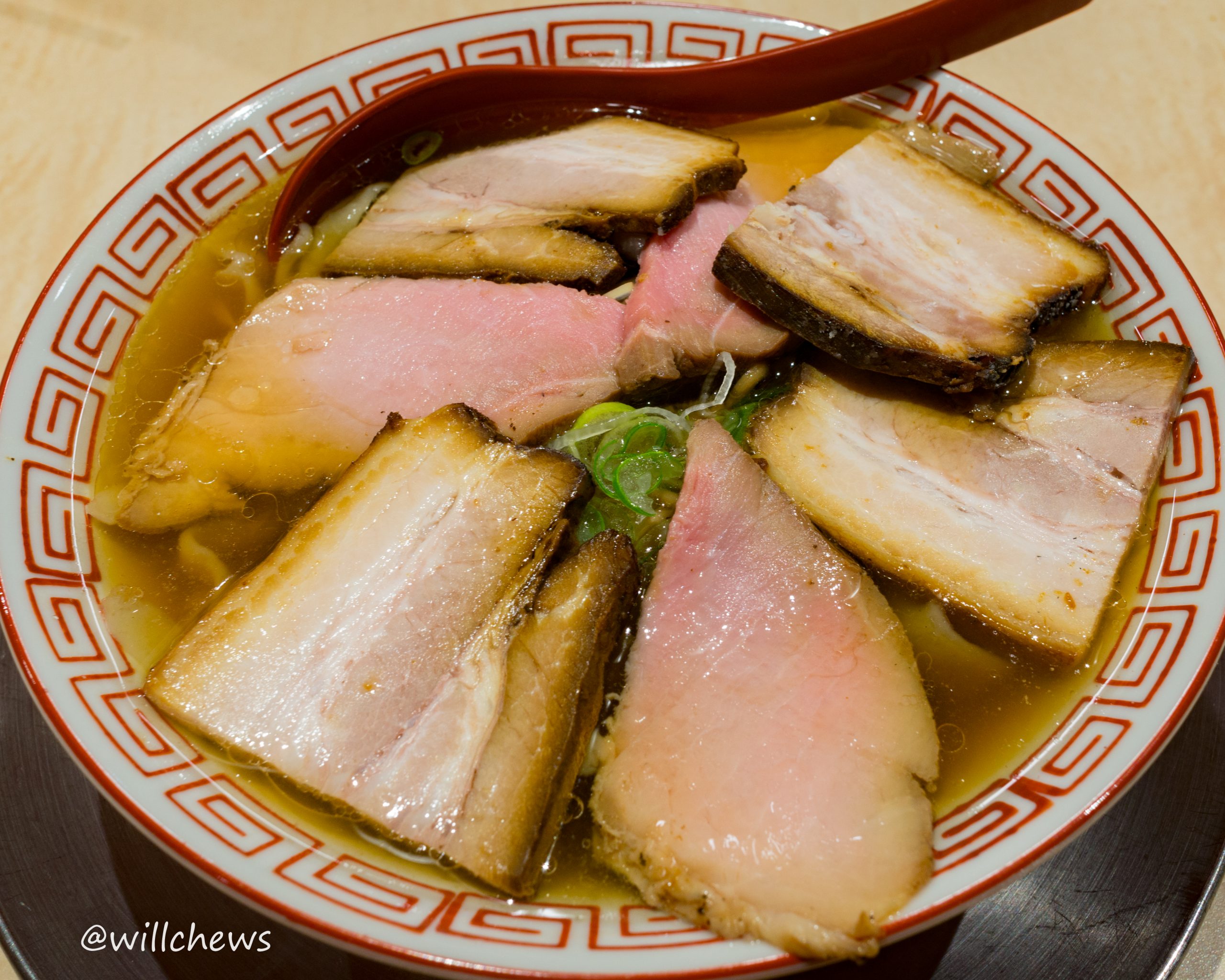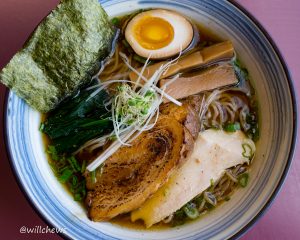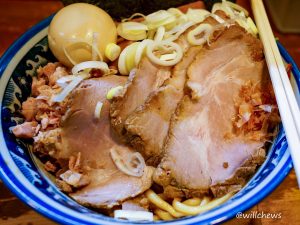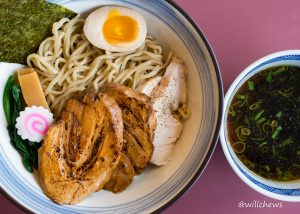According to Ramen Beast, Shichisai’s sister shop located in Hatchobori not only hand-rolls its noodles, they are also made to a customer’s order. In addition, at the time of my visit, one could get 50% more noodles for the same price.
All good things, but unfortunately, the handmade noodles simply did not resonate with me because they felt overly doughy and ended up in a lump in my stomach. This was unfortunate as the rest of the bowl was quite good. The broth is a distinct and delicate shoyu broth in the Kitakata style–since this functions as breakfast food–and is thoughtfully paired with some thinly-chopped menma and mushrooms. Chashu is both roast pork loin and belly and was quite good, with a pinkish middle in the loin. But the shop’s best chashu, a slab of grilled and then chopped pork shoulder that tastes like charcoal-grilled chicken wings, is only reserved for the Inaniwa ramen that also appears on the menu.
On the Inaniwa ramen: The Inaniwa ramen, which along with the chashu is a reason to re-visit Shichisai, takes its name from the Inaniwa udon style from Akita prefecture. It’s thinner than typical udon noodles, but more importantly, is kneaded, aged, kneaded again to take in air bubbles for chew, and then dried. It’s unclear if Shichisai makes its own Inaniwa ramen noodles, but according to Sato Yoetsu, an Akita company that makes Inaniwa-style udon and ramen noodles, the benefit of the drying makes for a much smoother-tasting noodle. Moreover, the thin noodles permit them to be served in a neat “noodle fold” block–see the Sato Yoetsu link for an example of a looser fold–that satisfies the fetish of a certain type of ramen enthusiast.




